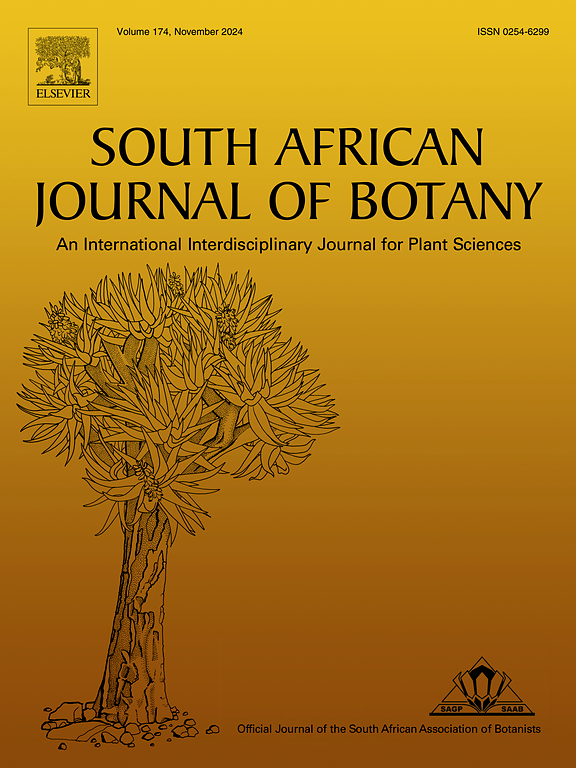Construction of the relationship between phytochemicals and gene expression in different Chaenomeles speciosa (Sweet) Nakai cultivars
IF 2.7
3区 生物学
Q2 PLANT SCIENCES
引用次数: 0
Abstract
This study investigated the phytochemical profiles of four Chaenomeles speciosa cultivars (Xuan Mugua) (Zhimahong, Pingguohong, Luohanqi, Lengmugua) and conducted transcriptome analysis of two selected cultivars (Zhimahong, Lengmugua) across three developmental stages (fruit set, expansion, and maturation). Using HPLC-MS/MS and RNA-seq, we quantified phenolic acids, flavonoids, organic acids, and triterpenoids while identifying associated biosynthetic genes. Key findings revealed significant interspecific variations at full maturity: Zhimahong showed the highest ursolic acid content (1.82 mg/g DW), Pingguohong accumulated peak oleanolic acid (2.15 mg/g DW) and malic acid (34.7 mg/g DW), while Luohanqi exhibited maximal proanthocyanidin B2 (0.68 mg/g DW), chlorogenic acid (1.24 mg/g DW), epicatechin (0.92 mg/g DW), phloridzin (0.56 mg/g DW), and rutin (0.43 mg/g DW). Transcriptomic analysis identified 29,424 differentially expressed genes (DEGs, |log₂FC|≥1, P-Adjust<0.05) between Zhimahong and Lengmugua at maturation, including flavonoid biosynthesis genes CHS (LOC114843160) and CHI (LOC114826590), and triterpenoid-related FDFT1 (LOC114822340) and LUP4 (LOC114847190). Antioxidant assessment (ABTS method) across all cultivars demonstrated stage-dependent variation, with Luohanqi showing maximum activity (17.94 mg VE/g DW) during fruit expansion. These results provided molecular evidence for cultivar-specific phytochemical accumulation, identified key genetic targets for metabolic engineering, and established Luohanqi as the optimal cultivar for antioxidant-focused cultivation. The findings directly inform breeding programs and quality control strategies for Xuan Mugua industrial applications.
求助全文
约1分钟内获得全文
求助全文
来源期刊

South African Journal of Botany
生物-植物科学
CiteScore
5.20
自引率
9.70%
发文量
709
审稿时长
61 days
期刊介绍:
The South African Journal of Botany publishes original papers that deal with the classification, biodiversity, morphology, physiology, molecular biology, ecology, biotechnology, ethnobotany and other botanically related aspects of species that are of importance to southern Africa. Manuscripts dealing with significant new findings on other species of the world and general botanical principles will also be considered and are encouraged.
 求助内容:
求助内容: 应助结果提醒方式:
应助结果提醒方式:


